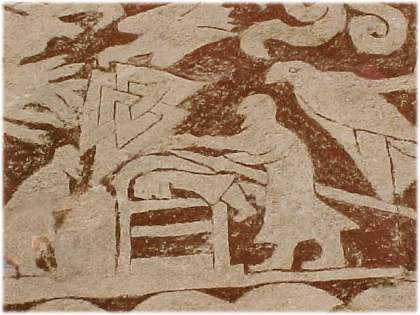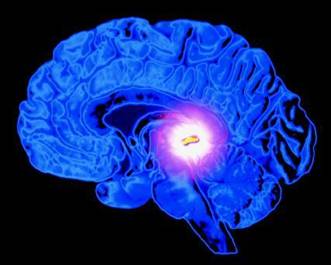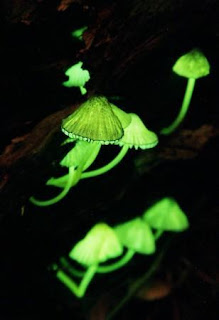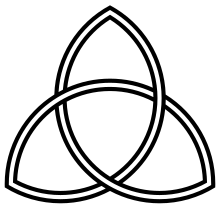|
|
¿COMO SALIR DEL "PLANETA DE LOS SIMIOS"? ¿USTED CREE EN LOS PSEUDOINTELECTUALES QUE A USTED LE ENGAÑARON QUE VENIMOS DEL MONO? ¿CUAL ES LA VERDADERA REVOLU-SION? ¿ES USTED UN VERDADERO REVOLUCIONARIO SI USTED SIGUE A POLITICOS CORRUPTOS O COMPLICES DE GENTE QUE VIOLO A LOS DERECHOS HUMANOS? LA UNICA SALIDA ES JESUCRISTO. DEJE USTED DE AUTOENGAÑARSE Y ENGAÑAR A LA GENTE. EN INGLES ESTA LA CLAVE
MON-KEY
MONDAY
MON=MOON=LUNA
KEY=LLAVE
|
|
|
|
|
The pillars are not material, for sure they were represented many times as for eg in Solomon temple, we've gotalso the legend of TubalCain and Hiram Abiff or the pillars of Hercules, legends encrypt knowledge for the initiates.The pillars encrypt the knowledge of Hermes, Toth, the baboon, the moon mon-key. B-A-B -OON Boaz - Aquarius - Boaz - Moon   Blue-Toth - Blue-tooth rune, same VW beetle codex, the valnut rune which is called the death knot, the world knot comes from nut, nuts which are seeds are the highest source of zinc the philosopher's stone - open sesame 9 = 1001 binary nights. So if we go to the particular zinc molecule we find the Borromean rings, the rings of the Lord which is clearly the Demiurge. What were Jachin and Boaz Sol-o-mon temple pillars made of ? Sol = Sun O = 15 =1111 MON= MON-KEYBrass same material of Moses serpent, and alloy of copper and zinc which together with sulfate make the galvanic natural battery, Lucifer's Demiurge light key.  Nordic human sacrifice under the Valknut - underworld key    Zinc molecule - hexagonal - triquetra - Valknut  Borromean rings as elipses  Saturn rings  Saturn hexagonal north pole - Nasa picture Planet number 6 - counterclockwise spiral rotation - start from the outside, number of the beast and man  The rings of power and the two towers of Tolkien - Jachin and Boaz   glowing mushrooms http://www.answers.com/topic/philosopher-s-stoneNumerous instances are on record of Seton's projections, the majority of which were verified by multiple observers. On one occasion, while in Holland, he went with some friends from the house at which he was residing to undertake an alchemical experiment at another house near by. On the way there, a quantity of ordinary zinc was purchased, and reportedly Seton succeeded in projecting the zinc into pure gold by the application of his powder. A similar phenomenon occurred at Cologne, and even the most extreme torture could not wring the secret from him. Read more: http://www.answers.com/topic/philosophe ... z1trpneEMoSo lets make gold http://www.youtube.com/watch?v=_g_ml8tAnWE
|
|
|
|
|
G-O-D/G-D/7-4/O=LETRA NUMERO 15
Jachin and Boaz construction from the rhombic dodecahedron state of the hypercube
6 + 9 = 15 = 1111 binary - the cubes of the hipercube crash in the pyra-midd-le through the s-piral-led axis.
Pira stands for Latin fire.
Mark 15.33 - Mark the Lion symbol of Judea
And when the sixth hour was come, there was darkness over the whole land until the ninth hour.
15 = 1111
3 = binary 11 - 33 = 1111
What were Jachin and Boaz Sol-o-mon temple pillars made of ? Sol = Sun O = 15 =1111 MON= MON-KEY |
|
|
|
|
Does Anybody know what this is on the Tour de Magdela
[urlhttp://www.flickr.com/photos/9484963@N03/5141839522/][/url]
When you go up the spiral steps and open the door for the view
there looks to be a pillar of sorts with a triangle on top and the
Trinity or triquetra
the three goddesses...
or Father Son and Holy Ghost
The triquetra is often found in Insular art, most notably metal work and in illuminated manuscripts like the Book of Kells
The windows have the three leaf clover
clover is one of the main nectar sources for honeybees.
It makes sense there is a triangle connected to the shamrock or clover it is three in one
The Druids and Pagans used the shamrock as well the fleur de lis with France
It is very Celtic
This symbol is on the roof top of Roslyn Chapel there is a pillar or steeple with a pointed top
on the roof of Rosslyn Chapel ...it reflects the clubs in the deck of card
the number three
I wrote an article on what I found on the roof tops of Rosslyn
this structure at the Tour of Magdala has windows with the clover/clubsymbol
The Clubs have aconnection to the fleur de lis
which is a major symbol for the Acadians also with the French
Clovis the Merovingian took it as his symbol
Clover...Clovis
The triquetra are the borromean rings mentioned before  The clover symbolizes the three rings of the Lord - Demiurge  The spiraled stair symbolizes W time axis , at the end-top you got the three ring of fire. The galaxy is alive, all living systems reproduce through the sexual fire, in the microcosmos and also the macrocosmos.  Spirals 9-6 cyrcling the vesica pisics The motto of the Church of Scotland is Nec tamen consumebatur - Latin for Yet it was not consumed Furthermore, recent medical evidence indicates that with each and every ejaculation men suffer a significant loss of zinc, a rare but vital trace element. Frequent ejaculation thus results in a chronic, critical deficiency of zinc, symptoms of which include loss of memory, mental confusion, paranoia and hypersensitivity to sunlight. These facts seem to verify the 'old wives tale' that excessive male masturbation addles the mind, weakens the spine and leads to blindness. What do we use to treat the prostate ? Pumpkins glowing Halloween seeds  Ritual sex magic is based on the interdimensional sexual singularity fire  Hierosgamos fermentation ritual The virtual fleur the lis comes out from the middle spirals of rhombic dodecahedron hypercube diagram, reason why it's said to be a phallic symbol. Lis - Lisard key, the Mona Lisa, Mon -moon 1 singularity plus the lizard key - reptilian rhombic singularity key  Monad From Wikipedia, the free encyclopedia Philosophy Monad (philosophy) a term meaning "unit" used variously by ancient philosophers from the Pythagoreans to Plato, Aristotle, and Plotinus to signify a variety of entities from a genus to God. Monism, the concept of "one essence" in the metaphysical and theological theory Monad (Gnosticism), the most primal aspect of God in Gnosticism Monadology, a book of philosophy by Gottfried Leibniz in which monads are a basic unit of perceptual reality Monadologia Physica by Immanuel Kant The Cup or Monad, a text in the Corpus Hermetica Mystery noun, plural -ter·ies. 1. anything that is kept secret or remains unexplained or unknown: the mysteries of nature. 2. any affair, thing, or person that presents features or qualities so obscure as to arouse curiosity or speculation: The masked guest is an absolute mystery to everyone. 3. a novel, short story, play, or film whose plot involves a crime or other event that remains puzzlingly unsettled until the very end: a mystery by Agatha Christie. 4. obscure, puzzling, or mysterious quality or character: the mystery of Mona Lisa's smile. 5. any truth that is unknowable except by divine revelation. MON-KEYS MOON ON MON-DAY MON = 1 = SINGULARITY MONA LISA SHOWS 9 FINGERS - GODDES 9 CLOCKWISE SPIRAL DOMAIN CODE MON -A - QUARIUS - SINGULARITY LISA - LIZARD - ROMBIC SKIN SINGULARITY   
_________________
E.T.A.E |
|
|
|
|
Monkey
From Wikipedia, the free encyclopedia
A monkey is a primate of the Haplorrhini suborder and simian infraorder, either an Old World monkey or a New World monkey, but excluding apes. There are about 260 known living species of monkey. Many are arboreal, although there are species that live primarily on the ground, such as baboons. Monkeys are generally considered to be intelligent. Unlike apes, monkeys usually have tails. Tailless monkeys may be called "apes", incorrectly according to modern usage; thus the tailless Barbary macaque is called the "Barbary ape".
The New World monkeys (superfamily Ceboidea) are classified within the parvorder of Platyrrhini, whereas the Old World monkeys (superfamily Cercopithecoidea) form part of the parvorder Catarrhini, which also includes the hominoids (apes, including humans). Thus, as Old World monkeys are more closely related to hominoids than they are to New World monkeys, the monkeys are not a unitary (monophyletic) group.
Historical and modern terminology
According to the Oxford English Dictionary, the word "monkey" may originate in a German version of the Reynard the Fox fable, published circa 1580. In this version of the fable, a character named Moneke is the son of Martin the Ape.[1] In English, no very clear distinction was originally made between "ape" and "monkey"; thus the 1910 Encyclopædia Britannica entry for "ape" notes that it is either a synonym for "monkey" or is used to mean a tailless humanlike primate.[2] Such confusions persist. Colloquially, the terms "monkeys" and "apes" may still be used interchangeably.[3] Due to its size (up to 1 m/3 ft) the Mandrill is often thought to be an ape, but it is actually an Old World monkey. Also, a few monkey species have the word "ape" in their common name, such as the Barbary Ape.
Later in the first half of the 20th century, the idea developed that there were trends in primate evolution and that the living members of the order could be arranged in a series, leading through "monkeys" and "apes" to humans.[4] Monkeys thus constituted a "grade" on the path to humans and were distinguished from "apes".[5]
Scientific classifications are now more often based on monophyletic groups, that is groups consisting of all the descendants of a common ancestor. The New World monkeys and the Old World monkeys are each monophyletic groups, but their combination is not, since it excludes hominoids (apes and humans). Thus the term "monkey" no longer refers to a recognized scientific taxon. The smallest accepted taxon which contains all the monkeys is the infraorder Simiiformes, or simians. However this also contains the hominoids (apes and humans), so that monkeys are, in terms of currently recognized taxa, non-hominoid simians.
A group of monkeys may be referred to as a mission or a tribe.
Physical description
Monkeys range in size from the Pygmy Marmoset, at 140 to 160 millimetres (5–6 in) long (plus tail) and 120 to 140 grams (4–5 oz) in weight, to the male Mandrill, almost 1 metre (3.3 ft) long and weighing 35 kilograms (77 lb). Some are arboreal (living in trees) while others live on the savanna; diets differ among the various species but may contain any of the following: fruit, leaves, seeds, nuts, flowers, eggs and small animals (including insects and spiders).
Some characteristics are shared among the groups; most New World monkeys have prehensile tails while Old World monkeys have non-prehensile tails or no visible tail at all. Some have trichromatic color vision like that of humans, others are dichromats or monochromats. Although both the New and Old World monkeys, like the apes, have forward-facing eyes, the faces of Old World and New World monkeys look very different, though again, each group shares some features such as the types of noses, cheeks and rumps.
Classification
| Phylogeny of living (extant) primates |
| Primates |
| Haplorhini |
| Simiiformes |
| Catarrhini |
|
Hominoidea
|
|
|
Cercopithecoidea
|
|
|
|
|
Platyrrhini
|
|
|
|
|
Tarsiiformes
|
|
|
|
|
Strepsirrhini
|
|
|
|
|
|
|
| Monkeys (in green brackets) are not a monophyletic group, since they exclude hominoids. |
The following list shows where the various monkey families (bolded) are placed in the classification of living (extant) primates.
Relationship with humans
The many species of monkey have varied relationships with humans. Some are kept as pets, others used as model organisms in laboratories or in space missions. They may be killed in monkey drives when they threatened agriculture, or used as service animals for the disabled.
In some areas, some species of monkey are considered agricultural pests, and can cause extensive damage to commercial and subsistence crops.[6] This can have important implications for the conservation of endangered species, which may be subject to persecution. In some instances farmers' perceptions of the damage may exceed the actual damage.[7] Monkeys that have become habituated to human presence in tourist locations may also be considered pests, attacking tourists.[8]
In religion and culture, the monkey often represents quick-wittedness and mischief.
As service animals for the disabled
Some organizations, for example Helping Hands: Monkey Helpers for the Disabled,[9] train capuchin monkeys as monkey helpers to assist quadriplegics and other people with severe spinal cord injuries or mobility impairments. After being socialized in a human home as infants, the monkeys undergo extensive training before being placed with a quadriplegic. Around the house, the monkeys help out by doing tasks including microwaving food, washing the quadriplegic's face and opening drink bottles.
In experiments
Macaques, especially the Rhesus Macaque, and African Green Monkeys are widely used in animal testing facilities, either wild-caught or purpose-bred.[11] They are used primarily because of their relative ease of handling, their fast reproductive cycle (compared to apes) and their psychological and physical similarity to humans. In the United States, around 50,000 non-human primates, most of them monkeys, have been used in experiments every year since 1973; 10,000 monkeys were used in the European Union in 2004.[citation needed]
The use of monkeys in laboratories is controversial. Animal rights activists claim that their use is cruel and produces little information of value, and there have been many protests, vandalism to testing facilities and threats to workers.[citation needed] Others claim that it has led to many important medical breakthroughs such as the rabies vaccine, understanding of human reproduction and basic knowledge about brain function and that the prevention of harm to humans should be a higher priority than the possible harm done to monkeys. The topic has become a popular cause for animal rights and animal welfare groups.[citation needed]
In space
A number of countries have used monkeys as part of their space exploration programmes, including the United States and France. The first monkey in space was Albert II who flew in the US-launched V-2 rocket on June 14, 1949.
As food
Monkey brains are eaten as a delicacy in parts of South Asia, Africa and China.[12] In traditional Islamic dietary laws, the eating of monkeys is forbidden. However, monkeys are sometimes eaten in parts of Africa, where they can be sold as "bushmeat".[13]
Literature
|
|
|
 Primeira
Primeira
 Anterior
2 a 5 de 35
Seguinte
Anterior
2 a 5 de 35
Seguinte Última
Última
|

